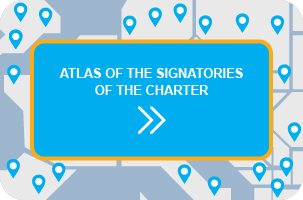Gender Mainstreaming as a mean to improve quality of municipal services
The municipality of Jönköping is implementing gender mainstreaming as a strategy to improve the quality of municipal services and ensure equal treatment of its citizens regardless of their gender.
The following examples illustrate how this has been applied in different areas of municipal competencies:
- Educational material used in fire safety training for children and students
A working group reviewed the material used in the fire and safety training for children and students and concluded that in the current edition, there were no girls or women figuring on the illustrations. To increase awareness among girls on the fire fighting profession and inspire girls to get interested in the profession at an early age, the municipality is now working on elaborating new educational material for children that are more representative. In a long term perspective, the municipality hopes that more girls will apply to become professional fire fighters.
- Implementation of Gender Mainstreaming in Leisure activities
In accordance with Article 20 of the European Charter for Equality stating that the signatory should ensure that women and men, girls and boys are offered equal access to cultural, recreational and sports activities, the municipality of Jönköping decided to use gender disaggregated statistics to gather information on the users of different municipal services in order to identify areas for improvement.
The municipality of Jönköping studied the following:
- The distribution of women and men in boards of associations receiving allowances
- The amount of women and men, girls and boys using different sports facilities
- The percentage of the total budget dedicated to activities mainly used by women versus activities mainly used by men
- Whether the municipality is organizing activities to encourage women to engage in activities that are usually performed by men and vice versa?
Based on the outcomes, the municipality wants to make sure that at least 45 per cent of the resources are allocated to the underrepresented sex in the coming budget. The municipality also wants to conduct these types of measurements more often to further improve the quality of their services.
- Gender disaggregated statistics of municipal invoices and receivables
The municipality of Jönköping also divided the statistics of invoices and receivables sent to citizens by the municipality based on gender Figures showed that men received reminders to a larger extent than women; however women were overrepresented among the ones receiving assistance from the municipality to make a repayment plan.
Moreover, figures showed that invoices concerning child care were in most cases sent to the woman of a household; whereas invoices concerning sanitation and garbage were, to a larger extent, sent to men.
As a result, the municipality of Jönköping decided to leave it up to the families to decide who should receive the different invoices.
The objective of this analysis was to get a better knowledge of the citizens using different services in order to identify and correct any inequalities in treatment. As a part of this project, municipal staff working in these departments also undertook training.
- Equal treatment of girls and boys in schools
The municipality wanted to analyse if girls and boys were treated differently in primary schools. Interviews of students showed that they did not feel any difference in treatment based on gender during classes. However, in case of disorder, boys would be reprimanded, whereas girls would have the chance to discuss the problem with the teachers. This difference in treatment was seen as unfair by the boys.
The results of the interviews were discussed with the teachers in order to raise awareness on the impact of treating and setting different expectations on children based on gender.
- Survey on salaries from a gender perspective
The municipality also conducted a study of the salaries of the employees working at the Educational Unit in order to identify possible differences of wages based on gender. By comparing salaries of women and men in certain professional categories, pay gaps based on gender could be identified in some groups. The second step of the study was to analyze the reason behind these differences in wages.
Mapping salaries of women and men in this way helps to identify potential unequal treatment based on gender at the individual or structural level.













